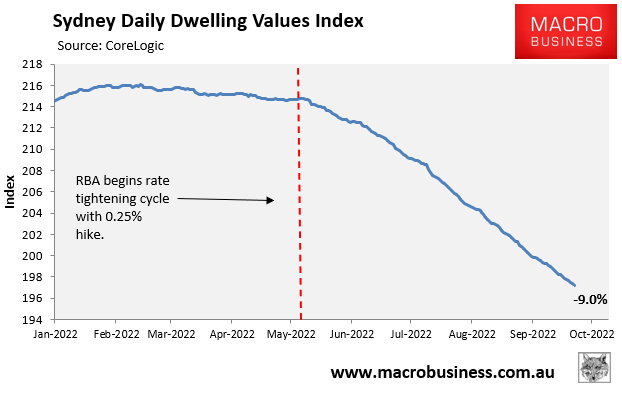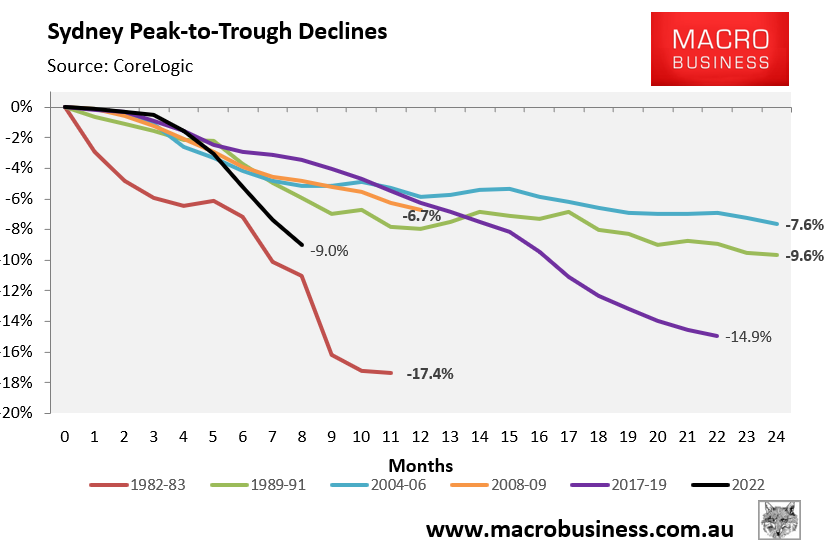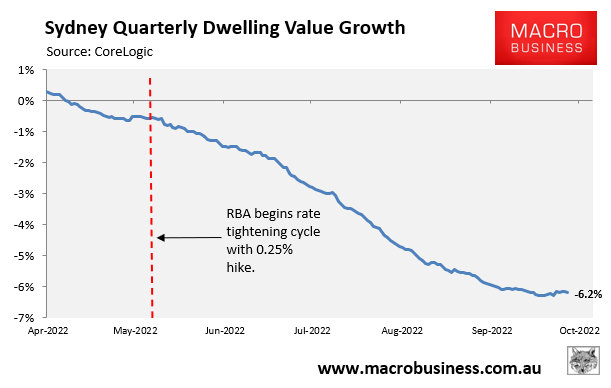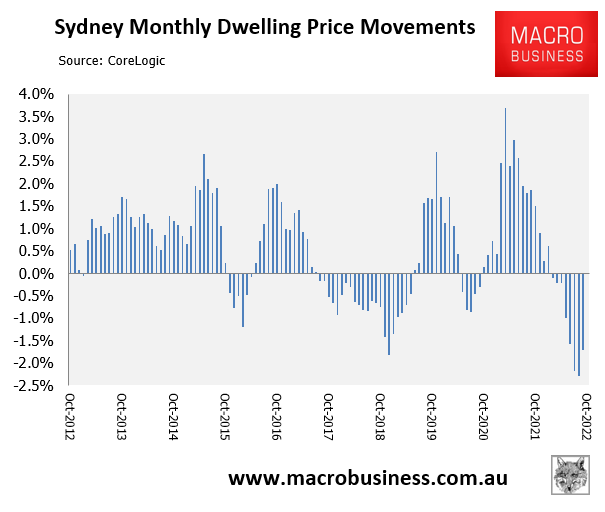Yesterday, Sydney’s housing correction hit a new milestone, with dwelling values down 9.0% from their mid-February peak according to the CoreLogic daily dwelling values index:

Sydney house prices plummet after rate hikes.
As shown in the next chart, this is the second fastest correction in CoreLogic records dating back to 1980, behind the 1982-83 episode:

Second fastest house price decline on record.
However, Sydney’s current correction began slowly, only to accelerate rapidly after the RBA’s first rate hike in early May. Since then, prices have sunk like a stone, down 8.4%.
The ‘good’ news is that Sydney’s housing correction has begun to slow, with the quarterly decline in values (-6.2%) moderating over the past fortnight:

Quarterly losses moderate.
Thus, Sydney dwelling values are still plummeting, but at a slightly slower pace.
The next chart plots Sydney’s monthly decline. With three days left in September, Sydney dwelling values had fallen 1.7% over the month – an improvement on July’s 2.2% fall and August’s 2.3% decline:

Eight consecutive months of house price falls.
I am confident that Sydney’s housing correction will exceed the 1982-83 episode to be the largest on record. By how much will depend on what the RBA does with interest rates.
For what it is worth, Jo Masters – chief economist at Barrenjoey – last week forecast the “largest and longest house price correction in history”, with Sydney house prices to fall 25% peak-to-trough. This forecast is based on a peak in the official cash rate (OCR) of 2.85%, which is well below consensus.
Obviously, if the OCR lifts in line with the more bullish forecasts of Westpac and Morgan Stanley (i.e. 3.6%) or the bond market (currently 4.3%), then the decline in house prices will be even greater.
Regardless, Sydney is facing its largest house price bust in living memory. The city’s extreme housing valuations and highly geared households makes it especially sensitive to the sharpest increase in interest rates in this nation’s history.

